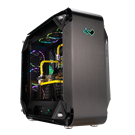Originally posted by carewolf
View Post
Did it ever occur to you that the file system is the foundation of everything an OS does, and the ability to UNILATERALLY change the file system is thus extraordinarily important to an OS vendor? Consider how many changes Apple has introduced over the last 15 years that have more or less possible because they controlled the entire file stack:
Adding journaling. Spotlight and general indexing. Various metadata, including security relevant metadata and ACLs. Time Machine. File versioning. Compressed files. Fusion. etc etc.
Insisting that Apple use an "open" file system, and that that file system will absolutely support their needs for the next 25+ years, is to claim that no changes of similar magnitude can be expected, changes which will require at least some monkeying around with the file system.
A file system is not just the disk layout (the part that is [mostly] immutable, though even that can have new features added as long as older OS code is blind to them, and JHFS+ has done that), it is also the implementation code. And that implementation code may occasionally need to change substantially (for features like Fusion). There's very little to Apple's advantage in tying themselves to either an existing disk layout OR to an existing source base that they cannot rapidly unilaterally change.
Beyond all this, there's an element of mass stupidity to these supposedly technical complaints.
What has been the biggest change in storage over the past ten years? Easy --- the use of SSDs. But SSDs can be used acceptably as fast hard drives, with hard-drive optimized file systems, because the gap in speed between RAM and flash is still so large.
Now what's going to be the biggest change in storage over the NEXT ten years? Also easy --- the use of persistent RAM (technologies like Optane). But persistent RAM REQUIRES
(a) new usage models that enforce storage ordering via CPU cache-control instructions (as opposed to how storage ordering was done with SSDs and HDs)
(b) new models for both how the file system is laid out on "disk", and how it is accessed --- basically you want something that looks like, and with an API like, an in-memory database.
Don't you think Apple is perfectly well aware of these issues? Hell, the newest version of the ARMv8 ISA has instructions added for precisely this purpose, and Apple is no doubt implementing them on its next CPU or two right now. So WTF would Apple switch to ZFS or ext4 or btrfs or some other file system optimized for storage circa 2000, or even F2FS or something optimized for storage circa 2010, when they have the chance to introduce something optimized for storage circa 2020?


 ).
).




Comment